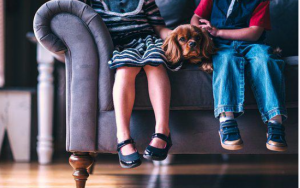When shopping for kids’ shoes, look for materials that allow your child’s feet to breathe. Avoid plastic, which traps moisture and sweat and is a breeding ground for bacteria. Instead, choose shoes with a thick rubber sole, providing more shock absorption and cushioning. Flat shoes will provide very little support and may cause your child’s foot to grow out of them too soon. Investing in high-quality kids’ shoes can increase your child’s comfort and confidence for the years to come.
 Measure your child’s foot size. You can do this by measuring their toes, but make sure to do this at the end of the day. Kids” feet can get swollen in the afternoon or after a long walk. When you measure your child’s feet, choose a pair of medium-thick pair that fits comfortably. It would be best if you also chose shoes that allow enough room for their long toes to jump without feeling too tight.
Measure your child’s foot size. You can do this by measuring their toes, but make sure to do this at the end of the day. Kids” feet can get swollen in the afternoon or after a long walk. When you measure your child’s feet, choose a pair of medium-thick pair that fits comfortably. It would be best if you also chose shoes that allow enough room for their long toes to jump without feeling too tight.
Make sure the toe box on your child’s shoes is at least 3/4 inch (17mm) wide. A child’s feet grow at different rates, so a shoe that fits snugly should be at least two to three inches wide. In addition, a child’s feet need room to move freely, and a shoe that is too tight can cause blisters on their toe tips. The thumb test is also practical. A thumb hole thumbhole least half an inch wide.
Next, measure your child’s foot length and width before you even begin shopping at https://spendless.co.nz/shop-categories/kids’ .html. Use a pencil and a piece of paper. Then, use a size gauge to measure the distance between the mark and the end of the shoe. It can ensure your child’s shoe size, and a shoe measuring tape is a helpful tool.
Choose a br. It can be purchased online or from some shoe retailers. And that fits your child correctly. Suppose your child has a hard time tying shoe-fastened shoes. They are easy to adjust, and teachers appreciate that their students wear them while in school. Knowing what your child wears if you’re shopping online can vary from brand to brand. However, it’s always best to visit a shoe store with your child to try on shoes.
Measure your child’s feet for proper fitting, and this rule is non-negotiable. You never want to buy a pair of shoes that don’t fit and expect to get a return. A good rule of thumb is to measure your child’s feet every year. It is imperative if you are purchasing a pair for operational purposes. Please measure your child’s feet for the length of the arch and foot width, and buy the correct size for them. This way, you can ensure the best fit for your child. You can also avoid buying too-big kids’ shoes. And don’t forget to buy enough shoes so that your child is comfortable.
When buying kid’s shoes, remember that they grow very quickly. Don’t buy too large or too small shoes, as it can interfere with their foot development. Instead, buy shoes that fit comfortably and provide a healthy environment for your child to grow. The thumb is a useful measuring device because it can tell you how comfortable your child is wearing the shoes. A child’s foot is most comfortable in a shoe with a snug heel.
Children’s shoes should support proper foot development. The wrong size of shoes can lead to foot pain, ingrown toenails, and other issues. Improperly fitting footwear can also lead to shortened or stunted muscles, leading to dystrophy and other foot issues. By choosing the correct size of shoes for your child, you’ll be able to help them develop properly and explore the world with ease.
When shopping for shoes, remember that children’s feet grow quickly. Typically, a preschool kid’s foot size changes in six to eight months. The size of a child’s foot can change up to a half-size. Shoes that are too small will pinch or slip off easily. Shoes too large will not be comfortable for your child and could even lead to chronic bone deformities. Therefore, it’s essential to measure your child’s feet at least once every six months.
